Program Excellence Awards
October 24, 2017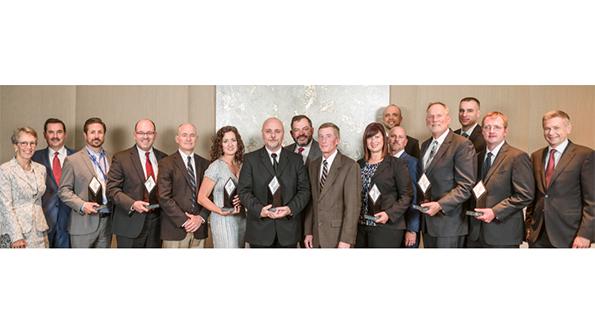
Winners for the 2017 Aviation Week Program Excellence Awards pause for a group photo following the annual banquet. Winners hailed from General Atomics Aeronautical Systems, Orbital ATK, Raytheon Missile Systems, Lockheed Martin, Ball Aerospace, United Technologies Corp., Aerospace Systems and Lockheed Martin.

Aviation Week presented Program Excellence Awards to seven programs Oct. 23 during the annual Program Excellence Symposium and Awards banquet. The awards recognize programs and their leaders for processes, practices and leadership that allow programs to go beyond mere performance to achieve standards that are benchmarks for the industry. Program Excellence Awards honored seven programs from the aerospace and defense industry.

Nominees are invited to apply for the awards, which represent the research and development/system design and development, production and sustainment stages of a program life cycle. Honors are subdivided to honor prime contractors and their suppliers. A seventh category, Special Projects, honors programs or initiatives that are one-time efforts rather than a typical program of record.
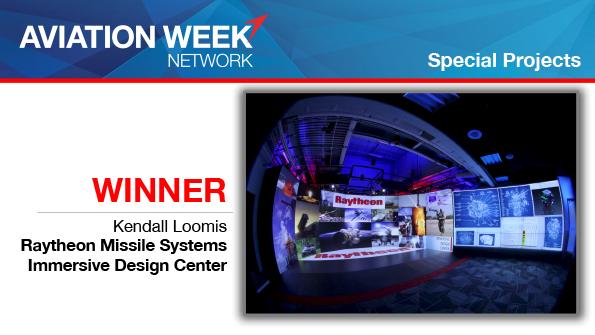
The winner in Special Projects is the Raytheon Missile Systems’ Immersive Design Center, represented by the center’s manager Kendall Loomis; Vice President of Engineering Laura McGill; and Vice President of Program Management Ed Roesly.
The Immersive Design Center is an element in Raytheon’s “smart” manufacturing effort. The center advanced Raytheon Missiles’ visualization technology to improve the design of products and to optimize the factory design for the product—establishing a theater-like environment where real-time conferencing, virtual reality, stereoscopic imaging, motion capture, animation, laser scanning and gaming technologies allow teams to visualize, analyze and resolve problems, test new ideas quickly, and adapt where needed.
The highly advanced technology development effort was planned for completion in 36 weeks—but the team achieved completion in 14 weeks.
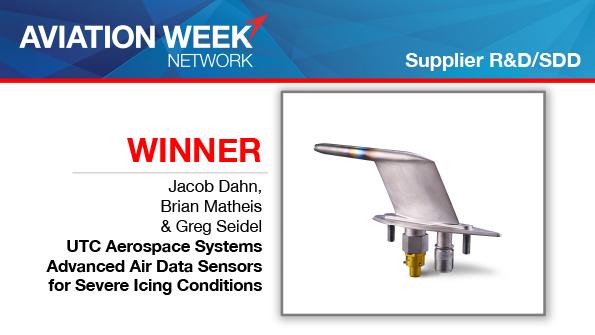
The winner for the Supplier Research and Development category is UTC Aerospace Systems for the Advanced Air Data Sensors for Severe Icing Conditions. Representing the team are Jacob Dahn, Brian Matheis and Greg Seidel.
The standard for measuring airspeed is the pitot-probe system, typically located on the nose or forward fuselage of an aircraft—no small matter, as it is used by the aircraft’s fly-by-wire controls; engine-management system; flight-management system; and ground-proximity warning system. The team wanted to address the adverse effects of high-altitude icing on the sensors.
The results clearly increase safety. The team developed new standards; a wind tunnel capable of creating and testing extreme icing conditions; and a new generation of air-data sensors built to operate in the expanded certification envelope.
This, of course, created a demand surge—and again, UTC Aerospace systems went into action, launching an aggressive plan to increase production output five-fold.

As sometimes happens in this process, the Evaluation Team determined that just one program had the right stuff in the Supplier Production category. Ball Aerospace provides the cryogenic electronics system for the James Webb Space Telescope. Allison Barto is the program manager and Charlie Atkinson is her counterpart from the customer, Northrop Grumman.
The Ball team proved its innovation and its production capabilities in developing a multiplexed architecture for the passively cooled cryogenic telescope facing deep space.
The team delivered 33 individual cryogenic electronics boxes, a production run well beyond what is traditionally required for a civil space program. The run was completed within budget, ahead of schedule, and with an in-process defect rate 95% lower than previous programs. Among the innovations was a solder process that would survive cryogenic exposure.
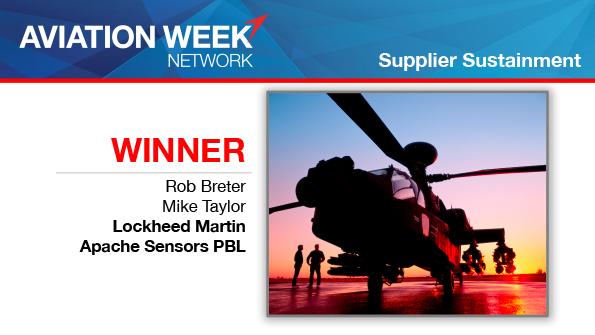
The winning team for the Supplier Sustainment category is the Apache Sensors Performance-Based Logistics team from Lockheed Martin. Rob Breter is the senior program manager for Fleet Support Programs and Mike Taylor is the director for fleet support for the Apache.
The team has maintained 100% mission capability for the worldwide fleet, supporting 700 aircraft, and exceeded the availability requirement each month by 14%. Working with Letterkenny Army Depot, the program has had a zero-backorder status for over eight years. Overall, the team has produced $175 million in cost avoidance for obsolescence mitigation, and another $124 million in reliability improvements and maintenance reductions.
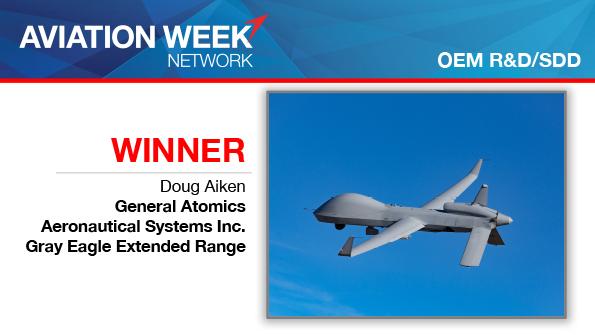
The winner for the OEM Research and Development/System Design Development Program Excellence Award is General Atomics Aeronautical Systems’ Gray Eagle Extended Range (ER) unmanned air vehicle (UAV). Doug Aiken is the program manager, and the customers are Lt. Col. Jay Sawyer and Jane Higginbotham.
The Gray Eagle ER team launched a full-court press in 2013, setting a deliberate but accelerated schedule to provide increased distance and loiter time; improve reliability and maintainability; and enable growth for payloads and weapons in the future for the Gray Eagle UAV. Among the steps was building the prototype on the main production line at company cost—replacing a gradual transition process and thus building needed specialized knowledge and skills early.
The aircraft completed final factory integration in 15 weeks—a company record—and ultimately beat the schedule by six weeks.

This year’s winner for OEM Production is a first-time entrant, Orbital ATK and the Cygnus commercial cargo system. Leading the program at Orbital are Frank DeMauro and David Hastman.
Orbital developed the Cygnus, its launch vehicle the Antares and a new launch site at Wallops Flight Facility as part of NASA’s unique partnering contract that involved key investment by both the government and industry. Under the cargo resupply contract, Cynics has flown six missions with four more planned, and a minimum of six missions on the second resupply contract.
The Cygnus team overcame a number of challenge, among them continuing focus after the Antares launch-vehicle failure. The team stayed on task and contracted with United Launch Alliance for the Atlas V, quickly determined changes required for compatibility, and launched within 13 months.
In all, the team was able to increase cargo capacity by 75% while increasing volume by just 33%; has extended its value to hosting scientific test beds; and has accommodated a new entry to the space economy—cubesats. The Cygnus was built to add new capabilities, thus lowering cost over time.
The team was able to use lower cost hardware without loss of safety and mission success. Recurring engineering and test costs were reduced through the use of multiple and varied fidelity platforms, running concurrently.
As with our previous honorees, the Cygnus team paid attention to people. On a continual basis, the leadership identified high-potential individuals and accelerated their growth plans—but also offered them increasing responsibility.
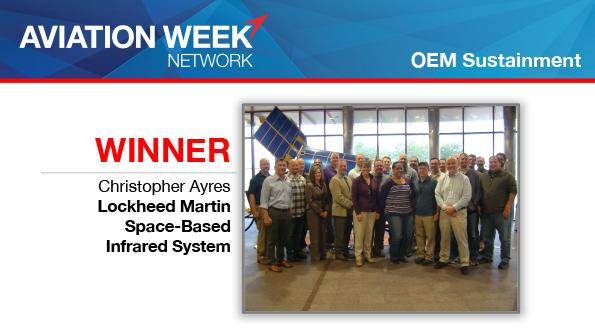
Lockheed Martin’s Space-Based Infrared System (SBIRS) claimed the OEM Sustainment award. Chris Ayres is the program leader, and Trent Darling is his customer from the Air Force Space and Missiles Center.
This program has, for close to two decades, been the U.S.’ front line of defense against a ballistic missile attack. This includes a near 1,000% improvement in detected events. The program’s Block 10 ground system went into operation at the end of 2016, consolidating ground systems for three different locations to a single Space and Missiles Center location.
The SBIRS team has reduced the cost of sustainment by as much as 10% per year, and is able to maintain this rate of savings through a variety of unique practices, including creating an ongoing business rhythm to identify, execute and document inefficiencies.
Each year, the customer prioritizes out-of-scope efforts that would provide the most “bang for the buck." Using any underruns from the preceding year, a request for proposal (RFP) is issued for the top priorities. This has resulted in 63 system modifications.
With a final nod to efficiency, Lockheed undertakes a resource-loading analyses to address day-to-day execution. These activities have identified opportunities across all operations and sustainment activities, cutting costs again and again—opening funds to accomplish critical in-scope but out-of-plan work.
That’s truly the way a program is supposed to work—for the customer, for the company and program team, but also for all of us.
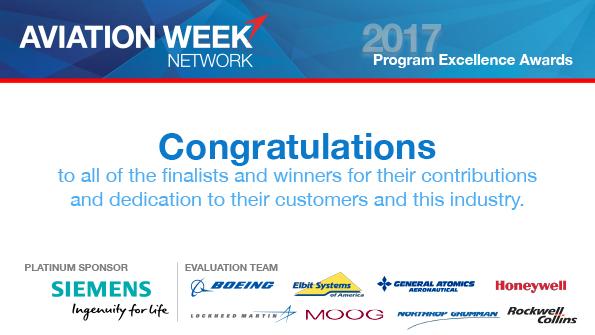
Nominations for the 2018 Program Excellence Awards will open in January. Visit aviationweek.com/program-management-corner.
Aviation Week’s Program Excellence Awards creates a base for the program/project management community that provides:
- Ideas on how to improve program performance processes that allow program/project leaders to predict execution risks and opportunities.
- Ongoing dialogue among a community of professionals.
- Recognition for those who are leading the way.
This year, seven programs were chosen as award winners.